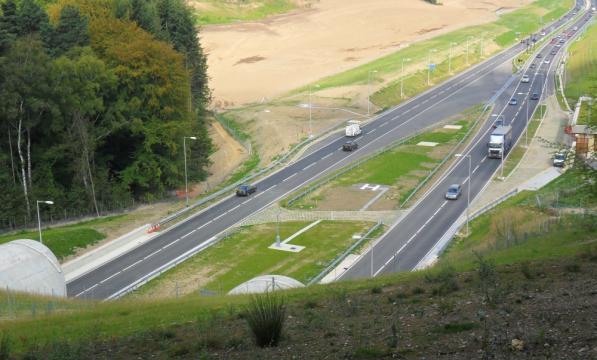Government roads strategy promises to 'cycleproof' major roads

A new strategy, 'Action for Roads: a network for the 21st century', has been published by the Department for Transport.
In it, the Department acknowledges the problem that parts of the major road network "can create a barrier" to walkers and cyclists.
They promise to "correct historic problems" and use the new programme of investment in widening and upgrading the major road network "to make even greater provision for cycling as a form of transport... and retrofit the latest solutions and make sure that it is easy and safe for cyclists to use junctions."
We welcome the Government’s commitment in its Roads Strategy to ‘cycleproof’ the major road network. Too often large roads are barriers to local journeys by bike, while those attempting to use them are 20 times more at risk of being killed than on minor urban roads. CTC has met the Roads Minister since the announcement and has urged him to ensure that local road-schemes, such as those needed for new developments, are ‘cycleproofed’ too.
Roger Geffen
Campaigns Director, CTC
The Highways Agency will be working on 20 schemes to improve cycle access and reduce the risk at junctions and the strategy promises future schemes will be included.
The Government has also promised to "encourage highways engineers working for local authorities to think about the needs of cyclists in their designs for new schemes." Although helpful, CTC feels that the Government should be requiring local authorities to do this, not merely encouraging them.
CTC's campaigners around the country are often battling to make sure that the Highways Agency and local authorities improve the situation when new roads are being built. Examples of schemes that are proving to be very weak for cycling are the Lincoln Eastern Bypass and the Postwick Hub interchange, part of a new road planned for northern Norwich.
Tunnel vision
The strategy uses the example of the Hindhead Tunnel on the A3 in Surrey, which CTC's local campaigners fought to ensure was better for cycling. Although the final result was not perfect, the construction of the tunnel has created much better conditions for cycling, with a very lightly trafficked, well-surfaced cycle route running for several miles, including several crossings of the A3 and creating a cycle link where previously the only way was on the A3 itself.
A similar new scheme is planned for the A303 at Stonehenge, where the UNESCO World Heritage site is blighted by heavy traffic and is entirely inaccessible to people on bikes.
Meeting the Minister
Shortly after the publication of the strategy, CTC met with the Minister responsible for the roads strategy, Stephen Hammond MP and urged him to ensure that 'cycle-proofing' needed to go beyond the Highways Agency roads. Although major roads are often a serious problem for cyclists, 82% of all the miles cycled are made on the minor road network, where bad driving and poor surfaces are often the bigger problems.
Lorries - a source of danger
CTC urged Mr Hammond, who is also the Road Safety Minister, to tackle the problem of lorries, which have been involved the deaths of 5 cyclists in the last two weeks, including:
- Andrew McMenigall and Toby Wallace, on the A30, on 2/7/13
- Philippine de Gerin-Ricard in Aldgate, east London, on 5/7/13
- Douglas Brown, from Edinburgh Triathlon Club, in West Lothian on 10/7/13
- A man, in his 40s, in central London, on 15/7/13

